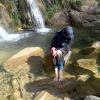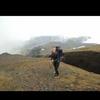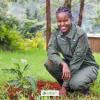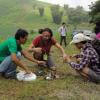Camera traps have been a key part of the conservation toolkit for decades. Remotely triggered video or still cameras allow researchers and managers to monitor cryptic species, survey populations, and support enforcement responses by documenting illegal activities. Increasingly, machine learning is being implemented to automate the processing of data generated by camera traps.
A recent study published showed that, despite being well-established and widely used tools in conservation, progress in the development of camera traps has plateaued since the emergence of the modern model in the mid-2000s, leaving users struggling with many of the same issues they faced a decade ago. That manufacturer ratings have not improved over time, despite technological advancements, demonstrates the need for a new generation of innovative conservation camera traps. Join this group and explore existing efforts, established needs, and what next-generation camera traps might look like - including the integration of AI for data processing through initiatives like Wildlife Insights and Wild Me.
Group Highlights:
Our past Tech Tutors seasons featured multiple episodes for experienced and new camera trappers. How Do I Repair My Camera Traps? featured WILDLABS members Laure Joanny, Alistair Stewart, and Rob Appleby and featured many troubleshooting and DIY resources for common issues.
For camera trap users looking to incorporate machine learning into the data analysis process, Sara Beery's How do I get started using machine learning for my camera traps? is an incredible resource discussing the user-friendly tool MegaDetector.
And for those who are new to camera trapping, Marcella Kelly's How do I choose the right camera trap(s) based on interests, goals, and species? will help you make important decisions based on factors like species, environment, power, durability, and more.
Finally, for an in-depth conversation on camera trap hardware and software, check out the Camera Traps Virtual Meetup featuring Sara Beery, Roland Kays, and Sam Seccombe.
And while you're here, be sure to stop by the camera trap community's collaborative troubleshooting data bank, where we're compiling common problems with the goal of creating a consistent place to exchange tips and tricks!
Header photo: Stephanie O'Donnell
No showcases have been added to this group yet.
- @Muzna
- | She, Her
Muzna Kashaf is a dedicated herpetologist who recently achieved her MPhil, showcasing her commitment to advancing knowledge in the field. Her research focus lies in amphibians, and she has utilized Geographic Information Systems (GIS) to enhance precision of her studies.

- 0 Resources
- 6 Discussions
- 2 Groups
- 0 Resources
- 6 Discussions
- 3 Groups
Panthera

- 0 Resources
- 2 Discussions
- 1 Groups
- @lucytallents
- | She/Her
VerdantLearn
Sociable e-learning for conservation capacity building

- 4 Resources
- 6 Discussions
- 4 Groups
- 0 Resources
- 0 Discussions
- 3 Groups
- @CitlalliMJ6
- | she/her
Conservation biologist, executive director at the Tesoro Escondido Reserve Foundation in the Ecuadorian Chocó, working on participatory action research, environmental education, primate and amphibian conservation
- 0 Resources
- 0 Discussions
- 7 Groups
St. Lawrence University
Professor of Biology at St. Lawrence University
- 0 Resources
- 2 Discussions
- 12 Groups
- @diego_lizcano
- | He/Him
Wildlife biologist interested in biodiversity monitoring and the conservation of mammals. Passionate photographer.
- 0 Resources
- 0 Discussions
- 7 Groups
wildlife crime WWF-NL
- 0 Resources
- 2 Discussions
- 6 Groups


- 0 Resources
- 33 Discussions
- 3 Groups
- 0 Resources
- 0 Discussions
- 16 Groups
- @jenlaw
- | She/Her
Biodiversity scientist specialising specialising in the study of tropical ecosystems and their biodiversity using multiple forms of technology, including acoustics, images and robotics.
- 0 Resources
- 0 Discussions
- 14 Groups
Machine learning is widely recognized as the solution to camera trap data processing, but a user-friendly and broadly-accessible system for putting this tech to use has not yet been developed. In this case study,...
1 October 2018
Motion-sensing wildlife-tracking cameras in South Sudan have captured 425,000 photos, documenting species not previously known to be found in this richly forested area. The team is now asking for your help to identify ...
22 August 2018
In this case study, Sam Seccombe documents his efforts to track down an off-the-shelf remote camera setup with the capability to stream quality, reliable video from the field. As he explains, it was a slighlty more...
25 July 2018
This latest chapter in the Conservation Technology Series from WWF-UK looks at the opportunities, challenges and state-of-the-art of satellite remote sensing for conservation applications. This issue reviews available...
23 April 2018
Are you an architect, engineer, designer or a scientist? Can you design and manufacture a prototype open source plant-BES (bio electrochemical system) to power a camera trap and environmental sensors in tropical forests...
3 April 2018
Hundreds of people joined our #Tech4Wildlife photo challenge this year, showcasing all the incredible ways tech is being used to support wildlife conservation. We've seen proximity loggers on Tasmanian Devils in...
3 March 2018
‘The Field’… Say the words ‘The Field’ to a group of conservationists and it will immediately conjure up vivid memories of everything from sticky wet rainforests to burning dusty deserts. What’s more, it’s almost...
17 January 2018
Article
A new research project is looking to investigate whether technology combined with the ancient skills and knowledge of Namibian trackers can help save cheetahs from extinction. Called FIT Cheetahs, the research project...
4 December 2017
Our panel of international experts has been hard at work reviewing the 47 proposals we recieved for innovative technological tools to address human wildlife conflict. The panelists have systematically been assessing the...
20 October 2017
The inherent complexity of not only deploying technologies in the field but also doing so in a scientifically rigorous manner can prove a substantial barrier for the effective use of conservation technologies, and clear...
11 October 2017
Article
As pressure on marine resources increases, fishers have to explore deeper and deeper waters to make a living. What does this mean for Belize’s deep-sea sharks? In an effort to understand the threats to these animals,...
26 September 2017
Frustrated by the limitations of the tools that were available for managing large camera trap data sets, Heidi Hendry and Chris Mann set out to develop something that met their needs, and thus, Camelot was born. In...
7 July 2017
August 2025
event
event
September 2025
event
event
event
February 2023
58 Products
Recently updated products
4 Products
Recently updated products
| Description | Activity | Replies | Groups | Updated |
|---|---|---|---|---|
| @cmwainaina please take a look |
|
Animal Movement, AI for Conservation, Camera Traps, Connectivity, Data management and processing tools, East Africa Community, Emerging Tech, Ethics of Conservation Tech, Human-Wildlife Coexistence, Marine Conservation, Protected Area Management Tools, Geospatial, Sensors, Software Development | 1 year ago | |
| I'm being quite daring by making statements on a forum that is frequented by Dan Morris (obviously in deference to his extensive knowledge on the subject :-) ), but here goes.... |
|
Camera Traps | 1 year ago | |
| We evaluated background subtraction as part of our pipeline for Zamba Cloud a few years ago. It's going to depend a lot on your backgrounds, but we found that for jungle/forest... |
|
Camera Traps | 1 year 1 month ago | |
| I was going to suggest the Garde Pro too. The model available in Australia is good. I have found that the download from the SD card to the linked phone can take a while, so be... |
|
Camera Traps | 1 year 1 month ago | |
| Hello everyone,I've been thinking about FLIR thermal cameras and I'm curious about their capabilities. Given their powerful capabilities,... |
|
Camera Traps | 1 year 1 month ago | |
| In that case, you might want to keep an eye on the project from @Lars_Holst_Hansen |
|
Camera Traps, AI for Conservation, Conservation Tech Training and Education, Early Career, Human-Wildlife Coexistence, Protected Area Management Tools | 1 year 2 months ago | |
| Hi AlexThank you so much for the imput 🙏 |
|
Camera Traps | 1 year 2 months ago | |
| Depending on how much drift there is it may be a fixed offset caused by the timer not restarting until you have finished puttin gin al the settings. You set the time, then do all... |
|
Camera Traps | 1 year 2 months ago | |
| Thank you for elaborating, @evebohnett ! And for the heads ups! |
+22
|
Camera Traps, Drones | 1 year 3 months ago | |
| [oops, the same reply got submitted twice and there doesn't seem to be a "delete" button] |
|
AI for Conservation, Camera Traps | 1 year 3 months ago | |
| Hi @zhongqimiao ,Might you have faced such an issue while using mega detectorThe conflict is caused by:pytorchwildlife 1.0.2.13 depends on torch==1.10.1pytorchwildlife 1.0.2.12... |
+6
|
AI for Conservation, Camera Traps, Open Source Solutions | 1 year 3 months ago | |
| Thanks, and that's a match! All these pictures are from a lab experiment and formated with AmphIdent. We took weekly belly pictures of several larvae. The aim of this google... |
|
Camera Traps, Data management and processing tools, Software Development | 1 year 3 months ago |























































